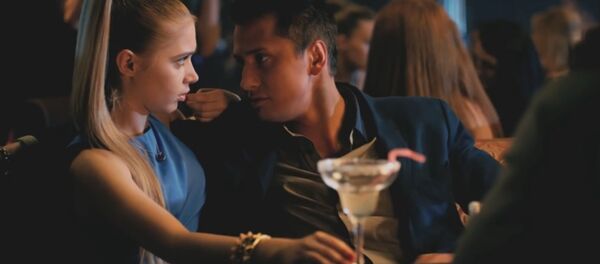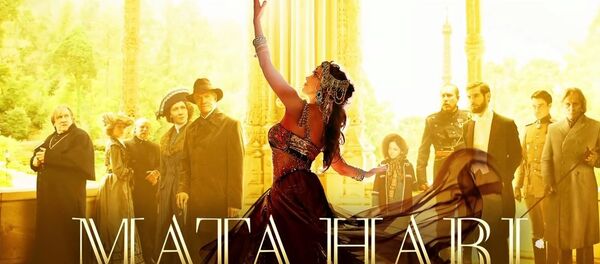"The Cranes are Flying," 1957 ("Letyat Zhuravli")
This military drama, based on the play "Eternally Alive" ("Vechno zhivye") by Viktor Rozov was directed at Mosfilm studio by the Soviet director Mikhail Kalatozov. The Cranes are Flying has become the first and so far the only domestic film to have been awarded the Palme d'Or — the top prize at the Cannes Film Festival.
With surprising emotional power, the film reveals a tragic story of two lovers, who were cruelly and permanently separated by war. Picasso himself was shocked, saying he had not seen anything like this in the last hundred years.
In order to film some of the epic scenes, Russian cinematographer Sergei Urusevsky invented and built the first operator's circular rail. Some of the groundbreaking techniques he pioneered are still used by filmmakers. According to renowned American film critic Todd McCarthy, the influence of Kalatozov and Urusevsky was obvious in the 2015 Oscar-winning movie "The Revenant."
"Battleship Potemkin," 1925 ("Bronenosets Potyomkin")
Created in just four months, "Battleship Potemkin" was ordered by the Soviet government, which needed propaganda material to mark the anniversary of the First Russian Revolution. In 1926 in Germany, the government tried to ban the film. A few years later, mutineers aboard the Dutch ship "De Zeven Provinciën" claimed that their revolt was inspired by this film.
Hundreds of examples can be found in world cinema copying the principles of the film's famous shooting scene. The scene was directly quoted in Coppola's "Godfather," Gilliam's "Brazil," and De Palma's "The Untouchables." Even The Simpsons have referenced Eisenstein.
"Andrei Rublev," 1966
A sincere biographical historical drama directed by Andrei Tarkovsky and co-written with Andrei Konchalovsky is loosely based on the life of Andrei Rublev, the great 15th-century Russian icon painter. A version of the film was shown at the 1969 Cannes Film Festival, where it won the FIPRESCI prize from The International Federation of Film Critics).
Tarkovsky sought to create a film that shows the artist as "a world-historic figure" and Christianity "as an axiom of Russia's historical identity" during a turbulent period of Russian history. It became a real eye-opener for Western audiences, which had perceived the Soviet Union as a bastion of atheism and godlessness.
"War and Peace," 1966-67
Leo Tolstoy's immortal novel has been adopted for the silver screen and television several times. The Soviet war drama written and directed by Sergei Bondarchuk won the Golden Globe Award in 1969 for Best Foreign Language Film. It was the first Soviet picture to win the Academy Award for Best Foreign Language Film, and also the longest film ever to receive an Academy Award.
Produced by the Mosfilm studios and released in four parts, the film became the most expensive one ever made in the USSR, at a cost of 8,291,712 Soviet rubles, equal to 9,213,013 USD in 1967 or over 66 mln USD in today's money. In 1967, the film was entered into the 1967 Cannes Film Festival outside of the competition; it was sent there instead of Andrei Tarkovsky's "Andrei Rublev."
Bondarchuk's "War and Peace" became known for its large-scale battle scenes and use of innovative panoramic filming of battlefields. Several scenes were shot using a hand-held 1KSSHR camera, which weighed about 10 kg and required uncommon physical strength when wielded by film operator Anatoly Petritsky.
"Hedgehog in the Fog," 1975
This Soviet animated film was directed by Yuriy Norshteyn and produced by Soyuzmultfilm animation studio in Moscow. In 1976, the cartoon won its first prizes at the All-Union festival of animated films in Frunze and at the Festival of Films for Children and Young Adults in Tehran. In 2003, the cartoon was crowned the best animated film of all time in Japan and worldwide from among a top-150 list created by 140 critics and animators from different countries.
The main hero of this animated film, the Hedgehog, received its own sculpture in Kiev. The film was also referenced in one of the episodes of the animated comedy series Family Guy, "Spies Reminiscent of Us" in 2009.
Famous Japanese film director Hayao Miyazaki, who created such anime masterpieces as My Neighbor Totoro, Spirited Away and Howl's Moving Castle, named this Soviet story about a little hedgehog his favorite work.
Interesting techniques were used during the cartoon's creation. The fog effects were created by putting a very thin piece of paper on top of the scene and slowly lifting it up toward the camera frame-by-frame until everything behind it became blurry and white. The film also used a trick of combined filming; for example, the water was real, albeit hatched by the artist.





